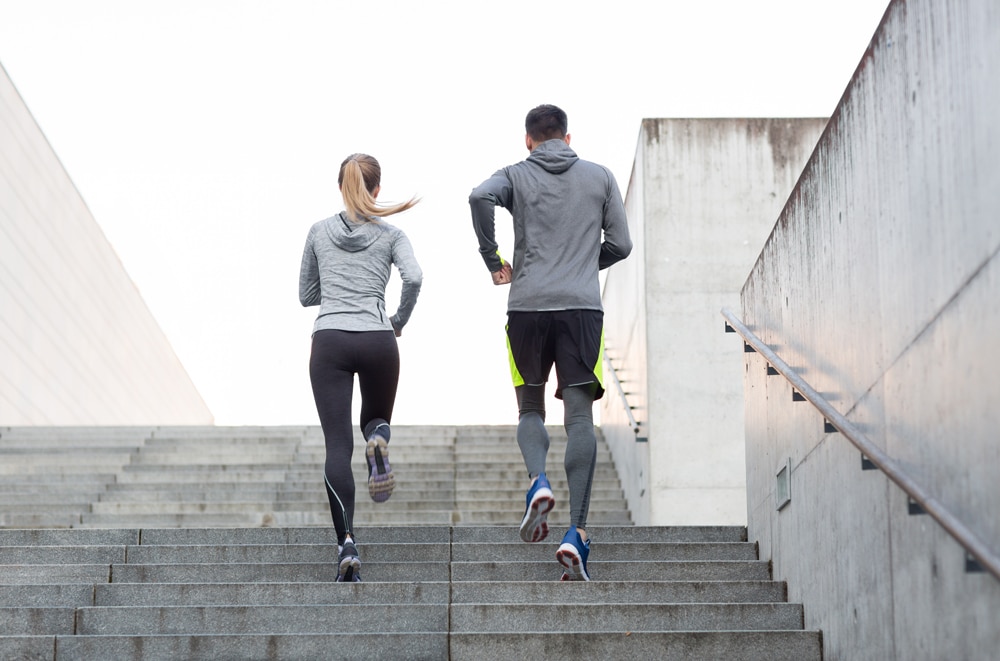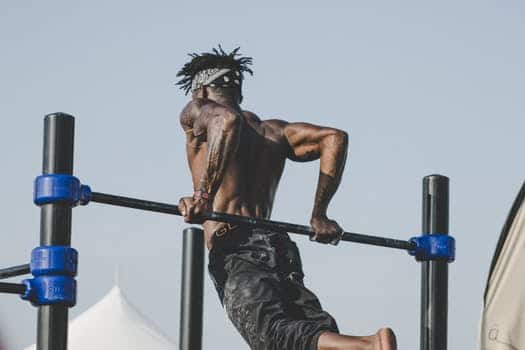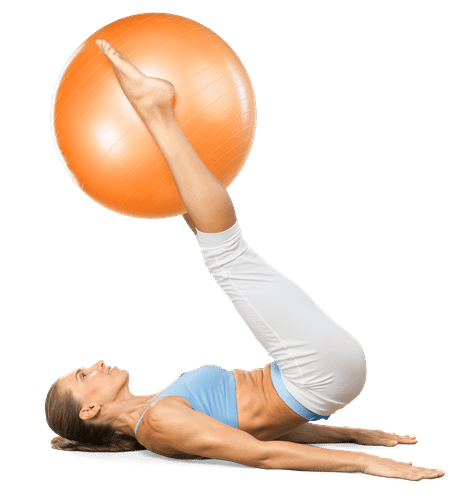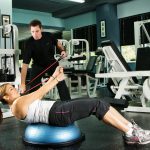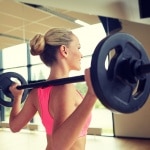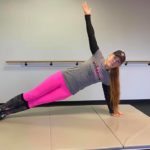September 2017
Specificity: Neuromuscular Adaptions Depend on How You Train
There are two main principles to fitness training that determine your outcomes: overload and specificity. Overload refers to making the body do more than it’s accustomed to doing, be it lifting, running, stretching or what not. Specificity refers to the outcomes you can expect based on the inputs you provide. That is, if you lift a lot of weight a few times, you will get stronger and bigger (given your ability to grow big muscles) but won’t improve your endurance. The opposite is also true: lift light weights a lot of times and you will get somewhat stronger, and have more muscle endurance but won’t get bigger muscles.
But cardiovascular training, presumably, works the same muscle groups similarly: the heart has to beat harder, faster and longer, so it gets stronger and more durable regardless of the type of training.
The benefits to the muscles that work to make the heart stronger (and healthier) vary according to the muscles used – such as upper body for swimmers, legs for runners – but also in how they adapt neurologically. That is, if you do endurance work (END) vs high-intensity interval training (HIIT), which is usually done with a combination of sprints mixed with recovery bouts of continued movement, will muscles adapt differently? Read more here, here, and here.
A recent study reported in Medicine & Science in Sports & Exercise did a creative look into this issue by studying two groups – an END and HIIT group – that performed 6 training sessions over 14 days. It found, using novel electromyography techniques, that the quadriceps muscles indeed make rapid changes in the way that they function even after such a brief intervention.
Both groups had similar cardiovascular improvements although the HIIT group exceeded the END by quite a bit; this is not unusual based on other studies that have made similar comparisons. But the quads of the HIIT group saw a significant improvement in their ability to produce a forceful contraction in a brief amount of time, i.e. to produce more power, vs the END quads. The END quads took 17% longer to achieve 50% of maximal contractions meaning they had already adapted to producing lesser amounts of force that could do so for longer periods of time.
Hence, specific adaptations were noted after only 6 sessions. The HIIT group’s muscles started adjusting for power production while the END quads started adapting for endurance. We’ve known the heart adjusts accordingly, the respiratory muscles adjust accordingly, and now we know the muscles adjust accordingly.
Proving, once again, that the outcomes of exercise depend on the inputs.
MSSE June 2017
Cardio Fitness and the Male Libido
There are hundreds of reasons to be aerobically fit: healthier heart, better blood sugar control, reduced risk of certain cancers, more stamina to play and work, better cognition in old age, etc.
But if anything is going to make a man less interested in engaging in a regular exercise program to get fit, it’s this: “Exposure to higher levels of chronic intense and greater durations of endurance training on a regular basis is significantly associated with a decreased libido score in men.”
Yes, you read that right: A study out of Chapel Hill, NC found that healthy men who exercised at high intensities and for long durations – marathoners or distance cyclists – had reduced sexual drives.
However, those men who exercised at low or moderate intensities tended to have high or normal levels of libido. Likewise, those who trained at very high intensities but for brief durations, such as those who do interval training or shorter-duration, higher intensity workouts of any sort, also had normal or high sexual drives.
This cross-section study used an on-line survey to determine the level of libido in 1077 male athletes and to correlate their fitness training parameters – intensity and duration – with their libidos.
While no measures of hormone status or other confounders like performance-enhancing drugs/supplements, existing psychological disorders (like depression) or diet were assessed, the survey depended on the athletes’ honesty in declaring that they were ‘healthy’.
Nonetheless, there is plenty of evidence showing that intense training does sap one’s physical as well as mental energies, potentially reducing sex drive. And despite finding that the younger athletes indeed had greater libidos than the older ones, the authors stuck with their conclusion that training factors have more impact than age alone.
In conclusion, guys, if you’re thinking too much about training and not about sex, you may need to slow down. If your wives are hiding your running shoes, you’d better slow down.
MSSE July 2017
Exercise of the Month
The Reverse Crunch
The abdominal crunch is a, no, the standard anterior core exercise in almost every gym. Properly done, it consistently engages the five main abdominal muscles – rectus abdominis (6-pack), left and right external obliques, and left and right internal obliques. To some extent, even without drawing in the navel, the deep transversus abdominis is also engaged.
The reverse crunch, with or without a ball or medicine ball between the feet, changes two features of the traditional crunch.
First, instead of raising the head and upper back, which can strain the neck, the reverse crunch raises the pelvis. Whereas the former brings the ribs toward the pelvis, the latter brings the pelvis toward the ribs.
Second, the traditional crunch attempts to diminish the role of the hip flexors usually by flexing the hips, with the knees bent and feet on or off the floor, but, as the reps mount up can still ‘call on’ the hip flexors to assist in generating the trunk flexion desired. The reverse crunch, on the other hand, stabilizes the upper torso and with the feet off the floor – either knees bent or straight as in this picture – essentially shortens the hip flexors so much that they cannot assist, putting all the effort on the 5 ab muscles.
To properly perform this exercise, one must avoid using the arms as counter-levers to help raise the pelvis off the floor; they are for stabilizing the body so all the movement of the trunk is in one plane only. Second, the pelvic tilt is subtle, that is, the rear end leaves the floor but not too high. If it goes off the floor too much, it’s possible either momentum from the hip flexors by swinging the legs toward the head, or pressure from the arms, or even forceful extension of the legs contributed. Finally, proper control mandates a brief hold at the top of the movement and a slow descent.
Then, you will feel the burn.
Recipe of the Month
From Tufts Health & Nutrition Letter, May 2017
(For subscription information please call (800) 274-7581, or go to www.TuftsHealthLetter.com)
Roasted Salmon with North African Herb Sauce
Ingredients
- 1/4 cup chopped fresh parsley
- 1/4 cup chopped fresh cilantro (or more parsley)
- 2 cloves garlic, minced
- 1 tsp paprika
- 1 tsp ground cumin
- 1/8 tsp salt, or to taste
- 1/4 cup nonfat plain yogurt
- 2 tbsp lemon juice, plus wedges for serving
- 1 tbsp vegetable oil
- 1 1/8 lb salmon fillet,* cut into 4 portions
*1 lb without skin
Directions
1. Stir together parsley, cilantro, garlic, paprika, cumin, ground red pepper, salt and pepper in small bowl. Add yogurt, lemon juice and oil; mix well. Reserve 1/3 cup to serve as sauce; set aside, covered, in the refrigerator.
2. Place salmon pieces on plate. Rub remaining parsley mixture over fish. Cover and marinate in the refrigerator at least 20 minutes or up to 1 hour. Discard any used marinade.
3. Meanwhile, preheat oven to 400ºF. Line a small baking sheet or baking pan with aluminum foil. Coat foil with cooking spray.
4. Transfer fish to prepared baking sheet. Bake until fish flesh is opaque and begins to flake, 12 to 20 minutes, depending on thickness. To estimate cooking time, use the Canadian rule of 10 minutes per inch of thickness. Serve with lemon wedges and reserved sauce.
Pinch of ground red pepper (cayenne)
Pepper to taste
Nutrition per serving:
Calories: 230 Fat: 12 g Saturated fat: 2 g Carbohydrates: 3 g
Total sugars: 1 g Fiber: 1 g Protein: 27 g Sodium: 140 mg
Potassium: 687 mg Calcium: 48 mg Vitamin D: 0 mcg Iron 2 mg.
Tid Bits


